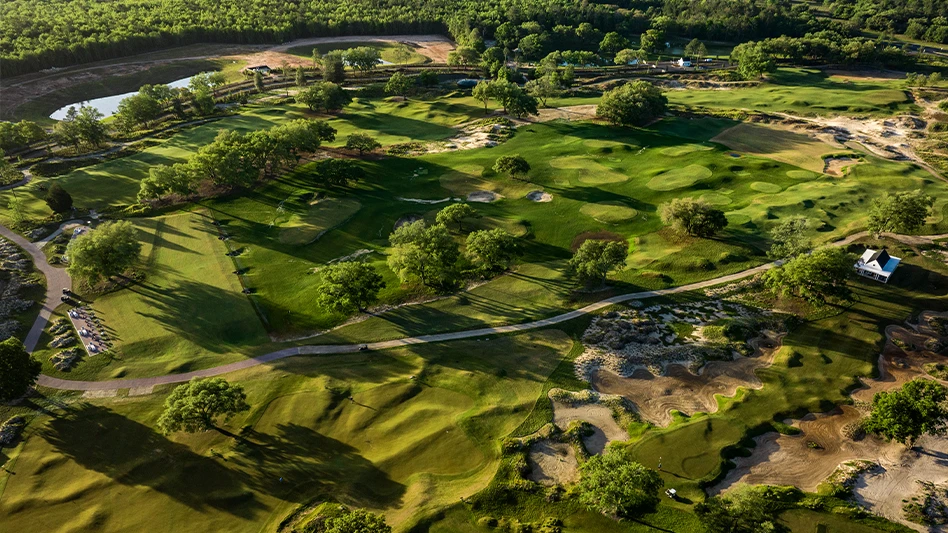
Adobe stock
First held 52 years ago, Earth Day is a now global event celebrated each year on April 22 to demonstrate support for environmental protection. Born on the heels of Rachel Carson’s 1962 book, “Silent Spring,” which documented the adverse environmental effects of indiscriminate pesticide use, former Wisconsin Gov. Gaylord Nelson planted the seeds (pun intended) for environmental teach-ins to take place on college campuses across America using the environment to serve as a vehicle to spark political change.
Regardless of your political affiliations or the evolving history of the Earth Day movement, as professional turfgrass managers I believe we can all agree we play a key role as caretakers of Mother Earth. For decades, our industry has been accused of environmental harm, and perhaps some of those accusations were warranted many years ago. But the industry has come a long way from the days of arsenic and mercury, with many new plant protectants derived from natural compounds with low-use rates and even lower doses of active ingredient.
Many professional turfgrass managers say they enter the business because they love the outdoors. Do you know any outdoor lovers who purposely harm the environment? I did not think so. The truth is those early superintendents did not set out to harm the environment, either. They were trying to make the most of what tools they were provided. Today we are provided with the best tools ever available in order to create a sustainable environment.
From the youngest of ages, we are taught how plants take in carbon dioxide and give off oxygen. It seems pretty simple. We live in a world where we are told carbon dioxide levels are rising to dangerous levels, and we need more plants and greenspace in our urban jungles. And golf courses are some of the best examples of natural habitat in environments where no other habitat is available.
In 2017, the USGA began funding a first-of-its-kind research project led by researchers at Michigan State University and the University of Minnesota. Called Natural Capital Golf, the project looked to examine the ecosystem services provided by various forms of land use, including golf courses.
The initial project compared 135 golf courses in the Minneapolis-St. Paul area to other land uses such as parks, farmland, residential homesites and industrial areas. The research revealed that parks and natural areas contain fewer nutrients than golf courses (no surprise, considering golf courses are fertilized and parks and natural areas are not), but golf courses absorbed and retained more nutrients than neighborhood home lawns. Again, no surprise, considering your home lawn sits adjacent to impervious roads with storm drains.
But, more important, the research revealed that golf course fairways can store about one metric ton of carbon per acre per year and provide important temperature cooling to nearby urban heat islands where heat is trapped by buildings, streets, sidewalks and car parks.
Dr. Brian Horgan of Michigan State said, “A person driving by a golf course might think of many other ways that land could be used, but what they don’t understand is there are tangible and intangible benefits they are receiving from that course. I would even argue that a community that’s subsidizing a public golf facility might be spending the best money they can spend, because they are preserving green spaces as well as access to the services the community receives from it.”
This research is valuable because earlier this year Assemblywoman Cristina Garcia of California proposed legislation to incentivize local governments to convert existing public golf courses to affordable housing. We all want to see more affordable housing for our communities. But given the tangible and intangible positive benefits the golf courses provide to our environment and communities does it really make sense to remove them and reduce the amount of greenspace?
More communities need to get behind this research and help tell our story that golf courses are good for the environment. Actually, golf courses are great for the environment. If folks are looking for ways to improve their communities and provide affordable housing, they should look to those areas already comprised of concrete and asphalt. I am talking about the rundown commercial strip malls that sit vacant in every town and city.
Why not rehabilitate these under-utilized impervious areas to construct the affordable housing needed and simultaneously replace a little greenspace in the heat island by surrounding the new homes with a park, a playground or … a golf course?
Latest from Golf Course Industry
- Graze, Invited partner for autonomous mowing launch at Gleneagles CC
- New grasses up north?
- From the publisher’s pen: Technology diffusion and turf
- Applications open for 2025 Syngenta Business Institute
- Smart Greens Episode 1: Welcome to the digital agronomy era
- PBI-Gordon promotes Jeff Marvin
- USGA investing $1 million into Western Pennsylvania public golf
- KemperSports taps new strategy EVP






